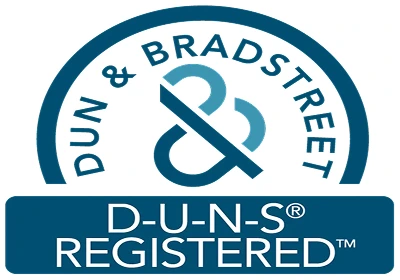Packaging Published Insights
Published Date : 22 Jan, 2026
The global injection molding materials market was valued at US$ 271.6 Billion in 2022 and is expected to exhibit a CAGR of 5.57%, in terms of revenue and expected to reach at US$ 419.1 Billion over the forecast period 2025-2032. Th... View more
Published Date : 22 Jan, 2026
Seal paper is a specialized type of paper that is designed to provide sealing capabilities for different types of packaging. It is widely used in industries such as food and beverages, pharmaceuticals, cosmetics, and others. Seal paper offers numerous advantages inclu... View more
Published Date : 22 Jan, 2026
Foam cooler boxes are highly efficient containers designed to keep perishable goods and beverages cool and fresh. These boxes are made of a type of foam insulation material that provides excellent temperature control, making them ideal for outdoor activities, picnics,... View more
Published Date : 22 Jan, 2026
Bagster bag is a revolutionary waste management solution. It is a flexible and convenient alternative to traditional waste disposal methods. It offers individuals and businesses a cost-effective and efficient way to dispose of their waste. ... View more
Published Date : 22 Jan, 2026
Collapsible metal tubes are widely used in various industries, such as cosmetics, pharmaceuticals, and food and beverages. These tubes provide a convenient and efficient packaging solution, offering protection and ease of use for consumers. The collapsible design allo... View more
Published Date : 22 Jan, 2026
Retort packaging has emerged as a popular packaging solution in various industries due to its ability to extend the shelf life of products without the need for preservatives. It is a type of flexible packaging that is designed to withstand high-temperature processing,... View more
Published Date : 22 Jan, 2026
The mailer packaging market has been witnessing steady growth over the past few years. Mailer packaging includes flexible pouches, bags, and envelopes that are used for protecting and shipping a variety of products. They provide cost-effective and sustainable solution... View more
Published Date : 22 Jan, 2026
Global paper doilies market is estimated to be valued at USD 292.6 Mn in 2025 and exhibit a compound annual growth rate (CAGR) of 2.9% from 2025 to 2032. The global paper doilies market has been gaining steady traction over the years, driven primarily by the growing... View more
Published Date : 22 Jan, 2026
The global sterile packaging market is estimated to be valued at USD 29.51 Bn in 2025 and is expected to reach USD 44.09 Bn by 2032, exhibiting a compound annual growth rate (CAGR) of 5.9% from 2025 to 2032. Sterile p... View more
Published Date : 22 Jan, 2026
The Global Container Liner Market is estimated to be valued at USD 951.8 Mn in 2025 and is expected to reach USD 1,303.5 Mn by 2032, exhibiting a compound annual growth rate (CAGR) of 5.6% from 2025 to 2032. The globa... View more
Published Date : 22 Jan, 2026
The disappearing packaging market is estimated to be valued at USD 4.75 Bn in 2025 and is expected to exhibit a compound annual growth rate (CAGR) of 11.4% from 2025 to 2032. Disappearing packaging refers to packaging that decomposes or disappears after use without ... View more
Published Date : 22 Jan, 2026
Hexagonal packaging provides numerous advantages over regular packaging formats. With six sides instead of four, hexagonal packaging maximizes space during transportation and storage. They can fit together tightly with no gaps in between, allowing 25% more products to... View more
Published Date : 22 Jan, 2026
The global wet waste management market is estimated to be valued at USD 134.78 Bn in 2025 and growing at a compound annual growth rate (CAGR) of 1.6% from 2025 to 2032.The global wet waste management market has been witnessing significant growth in recent years. Wet... View more
Published Date : 22 Jan, 2026
Global tobacco packaging market is estimated to be valued at USD 20.33 Bn in 2025 and, exhibiting a compound annual growth rate (CAGR) of 5.0% from 2025 to 2032. Global tobacco packaging market has witnessed significant growth globally over the past few years. Tobacco... View more
Published Date : 22 Jan, 2026
The global food container market has been witnessing steady growth in the recent years. Food container refers to packaging products that are used for packaging various food products. Rising demand for convenient packaging from both the food service industry as well as... View more
Published Date : 22 Jan, 2026
Global adherence packaging market is estimated to be valued at USD 1.12 Bn in 2025 and exhibiting a compound annual growth rate (CAGR) of 7.1% from 2025 to 2032. Adherence packaging refers to the packaging of pharmaceutical dosage forms in a sequential manner fo... View more
Published Date : 22 Jan, 2026
Egg packaging provides protection to eggs from damage during transportation and storage. Various types of packaging materials are used for egg packaging such as paper, plastic, and other materials. Factors such as growth of the food packaging industry, rising demand for convenience food products,... View more
Published Date : 22 Jan, 2026
The Molded Fiber Pulp Packaging Market is estimated to be valued at USD 10.15 Bn in 2025 and is expected to exhibit a compound annual growth rate (CAGR) of 5.6% from 2025 to 2032. Molded fiber pulp packaging or molded fiber is a packaging solution made from recycled... View more





